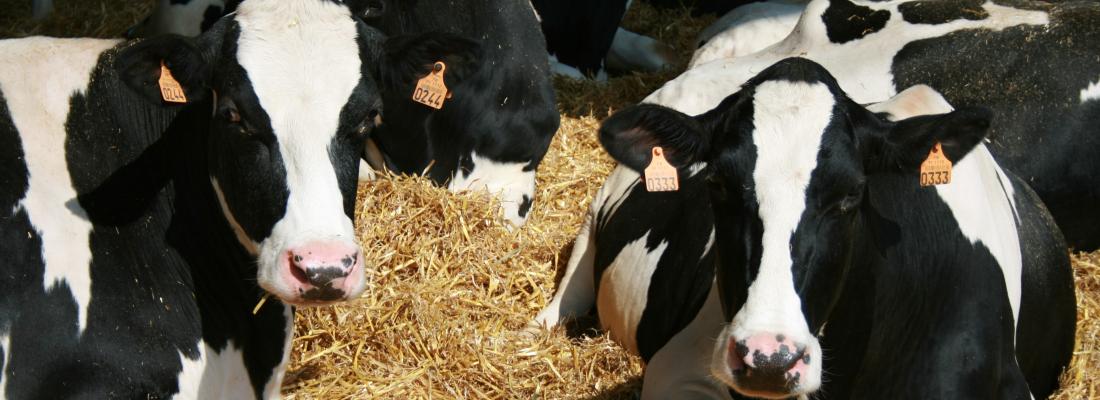Agroecology Reading time 4 min
Analysis of milk production and greenhouse gas emissions as a function of extreme variations in forage production among French dairy farms
Published on 08 September 2022

Many studies that investigate mitigation strategies of greenhouse-gas (GHG) emissions from farming systems often build farm typologies from average data from multiple farms. Results from farm typologies are useful for general purposes but fail to represent variability in farm characteristics due to management practices or climate
conditions, particularly when considering consequences of extreme environmental events. This limitation raises the issue of better distinguishing, within datasets of farms, farms that have average characteristics from those that deviate from average trends, in order to improve assessment of how climate variability influences farm performance.
We applied the statistical method called Extreme Value Theory (EVT) to identify dairy farms that produced “extreme” amounts of forage. Applying EVT to a dataset of dairy farms from Normandy, Lorraine and Nord-Pas-de-Calais (France) identified subsamples of 10–30% of dairy farms with the smallest or largest amounts of grass from pastures or maize silage in each region.
Characteristics of farms with extreme amounts of each forage often differed among regions due to the influence of geography and climate. Farms with the largest amounts of grass or the smallest amounts of maize silage had a variety of cow breeds in Normandy and Lorraine but had only Holstein cows in Nord-Pas-de-Calais. Conversely, most farms with the smallest amounts of grass or the largest amounts of maize silage had Holstein cows, regardless of region. The region also influenced whether farms were oriented more toward producing milk with higher fat and protein contents (Normandy and Lorraine) or toward producing larger amounts of milk (Nord-Pas-de-Calais). As the amount of a given forage changed from smallest to largest, a significant increase or decrease in the amount of milk produced usually changed GHG and enteric methane (CH4) emissions per farm in the same direction as the amount of milk produced.
For instance, an extreme increase in the amount of grass fed on farms (1314 vs. 5093 kg/livestock unit/year, respectively) in Normandy was associated with decreased mean milk production (8236 vs. 5834 l/cow/year, respectively) and GHG (7117 vs. 5587 kg CO2 eq./farm/year) and enteric CH4 (3870 vs. 3296 kg CO2 eq./farm/year, respectively)
emissions.
Senga Kiessé, T., Corson, M. S., & Wilfart, A. (2022). Analysis of milk production and greenhouse gas emissions as a function of extreme variations in forage production among French dairy farms. Journal of Environmental Management 307, 114537. https://doi.org/10.1016/j.jenvman.2022.114537
